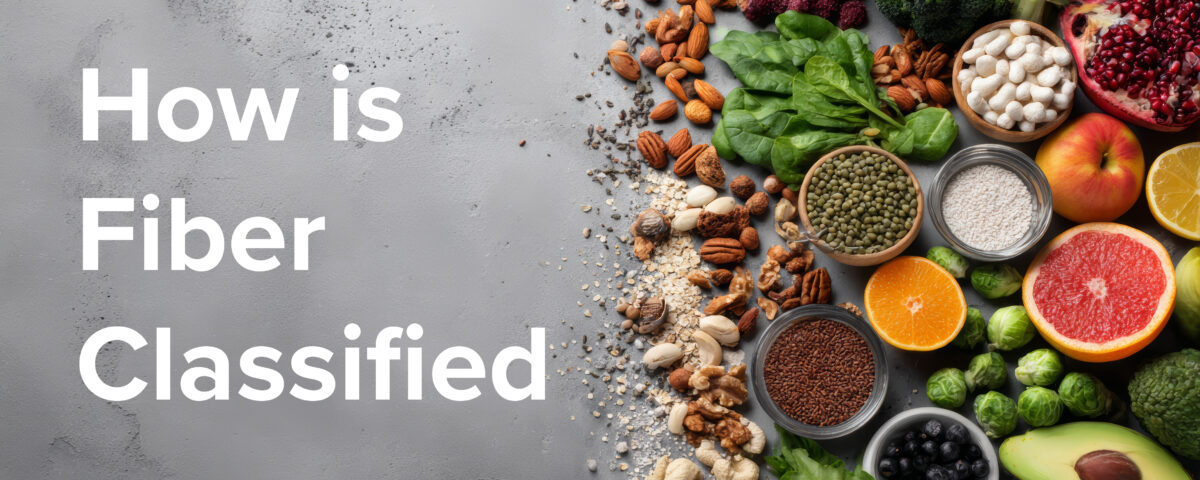
Colon Hydrotherapy: Why This Gut-Health Trend is Back (and What You Should Know)
11/12/2025How Fiber Is Classified: Insoluble, Soluble, & Prebiotic Explained

How Are Fibers Classified? A Simple Guide to Getting the Right Mix for Your Gut
Most people think of fiber as a single nutrient. But in reality, fiber is a family of compounds, each working differently throughout the digestive tract. Understanding how fibers are classified makes it much easier to support digestion, balance blood sugar, regulate appetite, and keep your microbiome thriving.
Let’s break it down clearly and simply — the way your gut understands it.
Colon hydrotherapy, sometimes called a colonic or colon irrigation, is a gentle internal cleansing process that uses warm, filtered water to help flush waste, gas, and buildup from the large intestine.
It’s performed by a trained colon hydrotherapist using a FDA cleared class 2 medical device where water is introduced and released in a low pressure, controlled, hygienic way. A session usually lasts 30–45 minutes, and most people describe it as surprisingly relaxing.
Supporters of colon hydrotherapy often report feeling lighter, clearer, and more energized afterward. When done properly, it can help jump-start better digestion and elimination — especially if you’ve been dealing with sluggish bowels or feeling “backed up.”
1. Insoluble Fiber — The Bulker + Mover
Insoluble fiber doesn’t dissolve in water. Instead, it adds structure and bulk, helping food pass more efficiently through the digestive tract. Think of insoluble fiber as your colon’s natural strength training.
Benefits: Promotes regularity; Supports healthy bowel movements; Provides “texture” your digestive muscles can push against.
Common sources: leafy greens, carrots, celery, nuts, seeds, whole grains, vegetable skins.
2. Soluble Fiber — The Gel-Forming Powerhouse
Soluble fiber dissolves in water and forms a soft gel. This gel slows digestion in a healthy way, allowing for better absorption, steadier blood sugar, and improved fullness.
Benefits: Helps regulate blood sugar; Supports healthy cholesterol; Promotes satiety; Contributes to gut comfort
Common sources: chia, flax, oats, beans, lentils, apples, berries, acacia.
3. Prebiotic Fiber — The Microbiome Feeder
Prebiotic fiber is food for your beneficial gut bacteria. When these microbes ferment prebiotic fibers, they create postbiotics such as short-chain fatty acids — especially butyrate — which help strengthen the gut lining and support immunity, metabolism, and inflammation balance.
Benefits: Feeds healthy gut bacteria; Promotes postbiotic production (like butyrate); Supports gut lining integrity; Helps regulate inflammation.
Common sources: acacia fiber, resistant starch, onions, garlic, asparagus, leeks, beans, green bananas.
Brenda’s note: Inulin is a prebiotic, but in higher amounts it can cause gas or cramping for many people. I prefer gentle prebiotics like acacia, which tend to be better tolerated.
Clarifying the Confusion: Soluble Fiber vs. Prebiotic Fiber
People often mix up soluble and prebiotic fiber because they sometimes overlap — but they’re not the same.
Here’s the simple truth:
- Soluble fiber describes how a fiber behaves (it dissolves and forms a gel).
- Prebiotic fiber describes what a fiber does (feeds good gut bacteria).
So how are they related?
- Some soluble fibers are prebiotic — but not all.
- Most insoluble fibers are not prebiotic, although a few may have mild effects.
- Some fibers do both — and those tend to be especially beneficial.
Easy Brenda-friendly takeaway:
- Soluble fiber helps slow digestion and improve fullness.
- Prebiotic fiber feeds your gut microbes and promotes postbiotics like butyrate.
- Fibers that do both (like acacia and resistant starch) give excellent dual benefits.
Understanding the distinction helps you choose the right fibers for your goals.
What’s the “Best Ratio” of Fibers for Gut Health?
There’s no perfect formula because nature bundles fibers together — whole foods contain a mix of soluble, insoluble, and prebiotic components.
However, we can look at plant-rich, traditional diets from cultures with excellent digestive health.
A natural pattern emerges:
- About two-thirds is insoluble fiber
- About one-third is soluble + prebiotic fibers combined
This pattern shows up consistently in vegetables, legumes, nuts, seeds, and whole grains.
The challenge today:
Most modern diets provide some insoluble fiber, but very little soluble and almost no prebiotic — the fibers most involved in blood sugar balance, satiety, microbial diversity, and gut-lining support.
So What Should You Aim For?
For better digestion, metabolism, and gut balance:
- Include all three types: insoluble, soluble, and prebiotic
- Spread fiber across meals for comfort and steadier energy
- Eat a wide variety of plants (around 30 weekly)
- Aim for 35g/day (women) and 40g/day (men)
This simple pattern mirrors the natural balance seen in high-fiber, long-lived cultures.
Getting More Fiber (Without Overwhelming)
Easy fiber-dense additions that lift daily intake:
- Chia or ground flax
- Beans and lentils
- Avocados
- Fruits and vegetables
- Whole grains
- Acacia fiber supplement for gentle prebiotic support
- An insoluble fiber supplement if you need help with regularity
Small, steady steps across the day make it easy to reach your fiber goals—while keeping your digestion comfortable.
If you enjoyed this information, be sure to subscribe to my newsletter, Brenda’s Gut Health Secrets, delivered to your inbox a few times a month. And follow my YouTube channel for educational videos including this video on Fiber Types.



